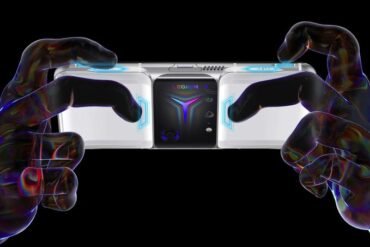The Importance of VRM Components on a Motherboard
Table of Contents
- Introduction to VRM Components – Key Components Explained
- VRM Components and Power Delivery – Ensuring Stable Performance
- Overclocking and VRM Components – Unleashing the Full Potential
- VRM Components and Energy Efficiency – Maximizing Power Savings
- The Future of VRM Components – Innovations and Advancements Ahead
Introduction to VRM Components – Key Components Explained
When it comes to motherboards, one of the most crucial components to consider is the Voltage Regulator Module (VRM). The VRM is responsible for regulating and supplying power to the processor, ensuring its stable and efficient operation. Understanding the key VRM components is essential for anyone looking to build or upgrade a computer system. In this article, we will explore the importance of VRM components and explain their functionality in detail.
1. VRM – The VRM itself is a complex circuit board that converts the voltage from the power supply into a form that the CPU can use. It consists of several key components working together to provide a stable and clean power supply to the processor.
2. MOSFETs – Metal-Oxide-Semiconductor Field-Effect Transistors (MOSFETs) are the primary components of the VRM. They act as switches, controlling the flow of electricity to the CPU. MOSFETs play a crucial role in regulating voltage levels and protecting the processor from power surges or fluctuations.
3. Inductors – Inductors store energy in a magnetic field and help smooth out any voltage ripples, ensuring a consistent power supply to the CPU. They filter out high-frequency noise and help maintain stable voltage levels.
4. Capacitors – Capacitors work alongside inductors to filter out noise and stabilize voltage. They store and release electrical energy, helping to maintain a steady flow of power to the CPU. High-quality capacitors are essential for reliable and efficient VRM performance.
5. Driver IC – The Driver Integrated Circuit (IC) controls the MOSFETs, ensuring they switch on and off at the correct times. It plays a crucial role in regulating the power delivery process and protecting the CPU from potential damage.
6. Heat Sink – VRM components generate heat during operation, so a heat sink is used to dissipate this heat and prevent overheating. A well-designed heat sink ensures the longevity and stability of the VRM by keeping the temperatures within safe limits.
In conclusion, understanding the key components of the VRM is vital for anyone interested in building or upgrading a computer system. A well-designed and robust VRM ensures a stable and efficient power supply to the processor, contributing to overall system performance and reliability. By paying attention to the quality and functionality of VRM components, you can ensure the longevity and optimal operation of your computer system.
VRM Components and Power Delivery – Ensuring Stable Performance
When it comes to building a high-performance computer system, the motherboard is a crucial component that plays a vital role in determining the overall stability and performance. One of the key elements on a motherboard that directly impacts its performance is the Voltage Regulator Module (VRM) and its associated components.
The VRM is responsible for regulating and delivering the appropriate amount of power to the CPU and other critical components on the motherboard. It converts the high voltage supplied by the power supply unit (PSU) into a lower voltage that the CPU can safely handle. Without a properly functioning VRM, the system may experience instability, reduced performance, and even hardware damage.
Here are some of the essential VRM components that contribute to ensuring stable performance:
- Power Phases: The VRM consists of multiple power phases, each responsible for delivering power to different parts of the CPU. More power phases generally result in better power delivery and stability.
- VRM Cooling: As the VRM components handle high levels of power, they generate heat. An efficient cooling solution, such as heat sinks or active cooling fans, is essential to maintain optimal operating temperatures and prevent overheating.
- Quality Capacitors: Capacitors store and deliver power to the CPU during peak load conditions. High-quality capacitors with low equivalent series resistance (ESR) ensure stable and reliable power delivery, minimizing the risk of voltage fluctuations.
- Inductors: Inductors help regulate the flow of electricity and prevent sudden spikes or drops in voltage. High-quality inductors with low resistance and high saturation currents contribute to stable power delivery.
- Regulator ICs: The VRM also includes regulator integrated circuits (ICs) that control the voltage conversion process. These ICs should have high efficiency and low power loss to ensure optimal power delivery to the CPU.
Investing in a motherboard with high-quality VRM components and power delivery is crucial for achieving stable performance, especially for demanding tasks like gaming, video editing, or overclocking. A well-designed VRM can handle high power demands, provide clean and stable voltage, and contribute to the overall longevity of the system.
Before purchasing a motherboard, it is essential to research and consider the VRM design and components used. Reviews, user feedback, and consulting with experts can help in making an informed decision to ensure a stable and reliable system.
Overclocking and VRM Components – Unleashing the Full Potential
When it comes to getting the most out of your computer’s performance, overclocking is a popular technique used by many enthusiasts. By pushing the limits of the hardware, overclocking allows for higher CPU and memory speeds, resulting in improved overall system performance. However, to successfully overclock your system, you need a motherboard with capable VRM (Voltage Regulator Module) components.
The VRM is responsible for supplying the correct voltage to the CPU and other components, ensuring stable and reliable operation. During overclocking, the CPU requires increased voltage to handle higher clock speeds. A high-quality VRM ensures that the increased voltage is delivered consistently, preventing any potential damage due to voltage spikes or drops.
Here are some key reasons why VRM components are crucial for unleashing the full potential of your system when overclocking:
- Power Delivery: A robust VRM design with high-quality components ensures efficient power delivery to the CPU and other components. This allows for stable and reliable overclocking, as the system remains supplied with sufficient power.
- Temperature Management: Overclocking generates more heat, which can impact the stability of the system. Good VRM components, such as high-quality power phases and heatsinks, help dissipate heat effectively, maintaining lower temperatures and improving overall stability.
- Overclocking Headroom: A motherboard with strong VRM components provides better overclocking headroom. This means you can push your CPU and memory to higher frequencies, achieving optimal performance gains.
- Longevity: Quality VRM components are designed to withstand the increased stress caused by overclocking. They have better durability, ensuring the longevity of your motherboard and preventing premature failures.
By investing in a motherboard with reliable VRM components, you can unlock the full potential of your system when overclocking. It is important to research and choose a motherboard that offers a robust VRM design, as it directly impacts the stability and performance of your overclocked system.
VRM Components and Energy Efficiency – Maximizing Power Savings
When it comes to motherboards, one of the most crucial components to consider is the Voltage Regulator Module (VRM). The VRM is responsible for regulating the voltage supplied to the CPU, ensuring stable and efficient power delivery. But did you know that the VRM components also play a vital role in maximizing power savings and enhancing energy efficiency? Let’s explore how VRM components contribute to power efficiency and why it’s important.
1. High-Quality Capacitors: VRM components, such as capacitors, are responsible for storing and discharging electrical energy. High-quality capacitors have lower internal resistance and can deliver power more efficiently, resulting in less energy wastage. These capacitors also have better endurance, ensuring long-term stability and reliability.
2. Efficient Power Phases: The number and design of power phases in the VRM directly impact power efficiency. More power phases allow for better power distribution and reduced power loss. Additionally, the use of high-quality power MOSFETs (Metal-Oxide-Semiconductor Field-Effect Transistors) with low resistance further enhances power efficiency by minimizing heat generation.
3. Digital PWM Controllers: Traditional analog Pulse Width Modulation (PWM) controllers are known to be less efficient compared to their digital counterparts. Digital PWM controllers provide more precise and dynamic control over power delivery, resulting in improved energy efficiency. They can adjust the voltage and frequency based on the CPU’s requirements, reducing power consumption during idle or low-load scenarios.
4. Thermal Design: Efficient heat dissipation is crucial for maintaining optimal VRM performance. VRM components generate heat during operation, and if not properly managed, it can lead to power loss and reduced efficiency. A well-designed thermal solution, such as heatsinks or heat pipes, helps dissipate heat effectively, ensuring stable power delivery and energy savings.
Maximizing power savings through VRM components is not only beneficial for reducing electricity bills but also for minimizing environmental impact. Energy-efficient VRM components result in lower power consumption and reduced heat generation, leading to a greener computing experience. When choosing a motherboard, considering the quality and efficiency of the VRM components should be a top priority to ensure long-term power savings and overall system performance.
The Future of VRM Components – Innovations and Advancements Ahead
As technology continues to evolve at a rapid pace, so do the components that make up our electronic devices. One such component that has seen significant advancements in recent years is the VRM (Voltage Regulator Module) found on motherboards. VRM components play a crucial role in regulating the voltage supplied to the CPU, ensuring stable and reliable performance. Let’s delve into the future of VRM components and explore the innovations and advancements that lie ahead.
1. Increased Power Efficiency: One area where VRM components are expected to see significant improvements is in power efficiency. Manufacturers are constantly working on developing VRMs that offer higher power efficiency levels, resulting in reduced power consumption and heat generation. This not only improves overall system performance but also contributes to environmental sustainability.
2. Enhanced Thermal Management: Another aspect that future VRM components are likely to focus on is improved thermal management. As CPUs become more powerful and generate higher heat levels, it is essential to have VRM components that can effectively dissipate this heat. Innovative cooling technologies, such as heat pipes and advanced heat sinks, are being integrated into VRM designs to enhance thermal performance.
3. Smaller Form Factors: With the increasing demand for compact and portable devices, VRM components will continue to shrink in size. This miniaturization trend is driven by advancements in semiconductor technology and the need for space-saving solutions. Smaller VRM components not only enable the development of thinner and lighter motherboards but also open up possibilities for innovative product designs.
4. Intelligent Power Delivery: The future of VRM components lies in intelligent power delivery mechanisms. Manufacturers are exploring the incorporation of advanced power management technologies, such as digital controllers and artificial intelligence algorithms, to optimize power delivery to the CPU. This allows for better customization and fine-tuning of power requirements based on workload, resulting in improved overall system performance.
5. Integration of Advanced Monitoring Features: VRM components are expected to incorporate advanced monitoring features to provide real-time feedback on power delivery and performance. This includes features such as voltage monitoring, temperature sensing, and fault detection. Real-time monitoring enables users to identify and address any potential issues promptly, ensuring the longevity and stability of their systems.
In conclusion, the future of VRM components on motherboards looks promising, with innovations and advancements aimed at improving power efficiency, thermal management, form factor, power delivery, and monitoring capabilities. As technology continues to advance, VRM components will play a vital role in supporting the demands of high-performance computing systems.
























